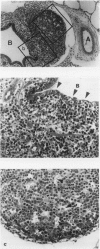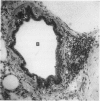Abstract
The development of bronchus-associated lymphoid tissue (BALT) was investigated in the pig, which is a species in which BALT is not found constantly. Different routes of contact with a specifically lung-pathogen bacterium Actinobacillus (Haemophilus) pleuropneumoniae were tested. Pigs, selected by bacteriological screening methods and the number of granulocytes in the bronchoalveolar lavage (BAL), were infected by aerosol. They were compared to previously enterally immunized pigs using active and inactivated bacteria. The development of BALT after the infection was compared to that in pigs with a single enteral, or no, contact with the bacterium. BALT was less frequent in these groups than in the infected pigs. Previously immunized pigs developed the highest number and the largest BALT with the most prominent morphological signs of activation. Immunization with living or inactivated bacteria did not cause histological differences. BALT was preferentially located around bronchioli and small bronchi. Additional BALT predominantly occurred in the walls of larger bronchi. Definite compartments of T and B lymphocytes were not found in immunohistological studies of BALT. It was concluded that the development of BALT can be induced by different modes of microbial stimulation.
Full text
PDF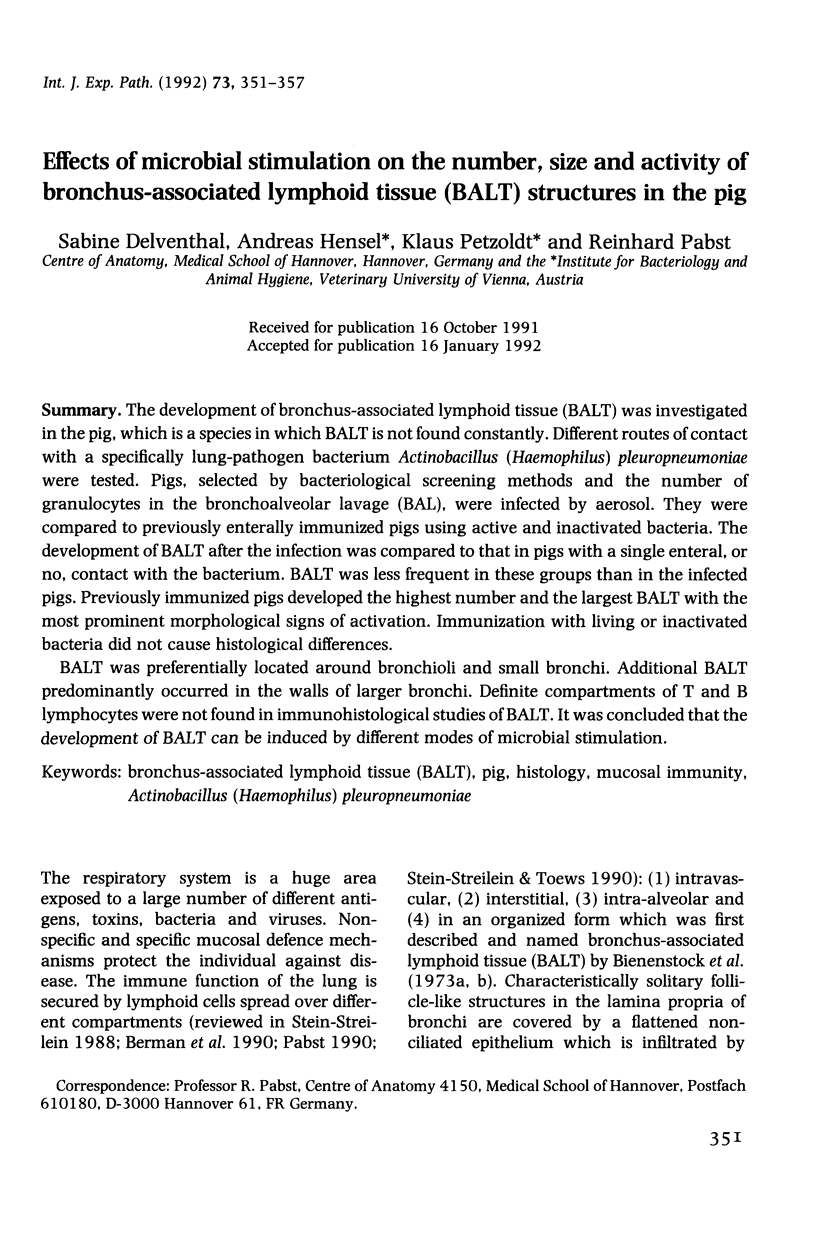
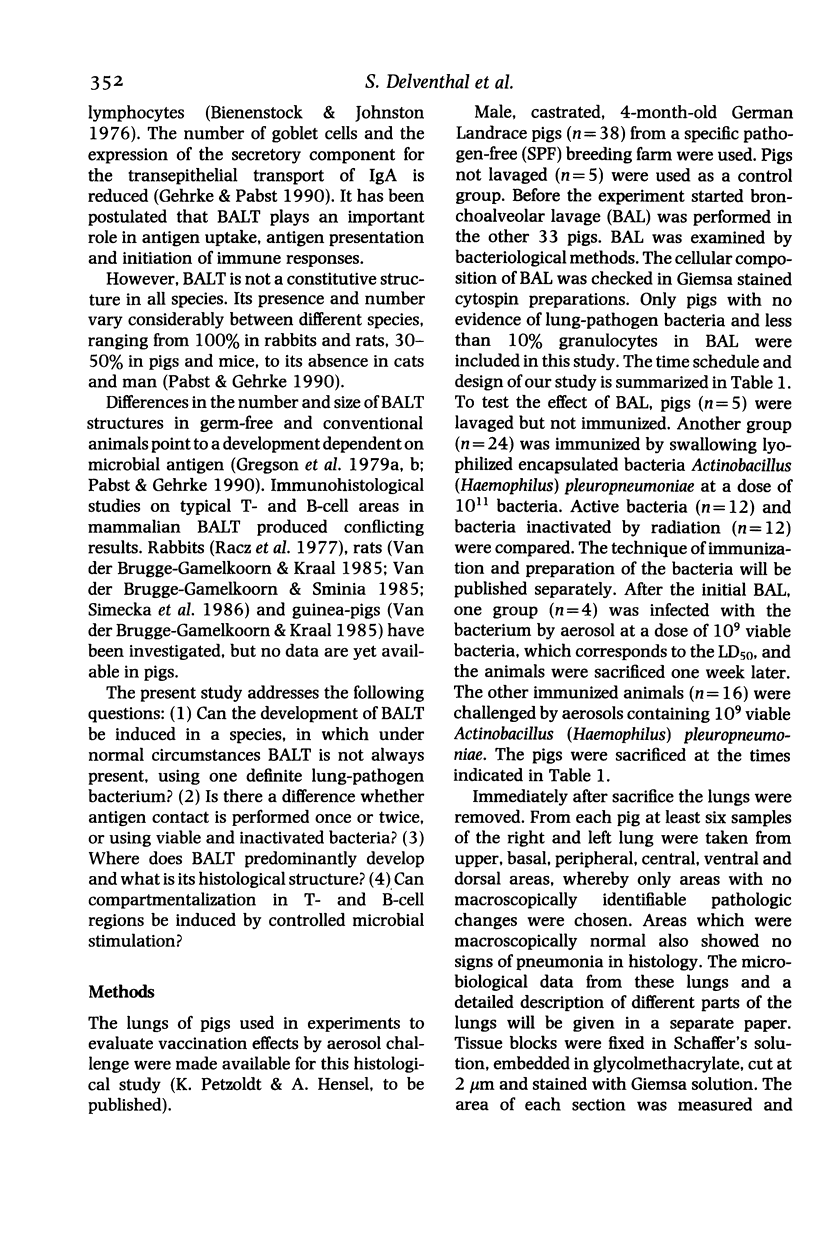
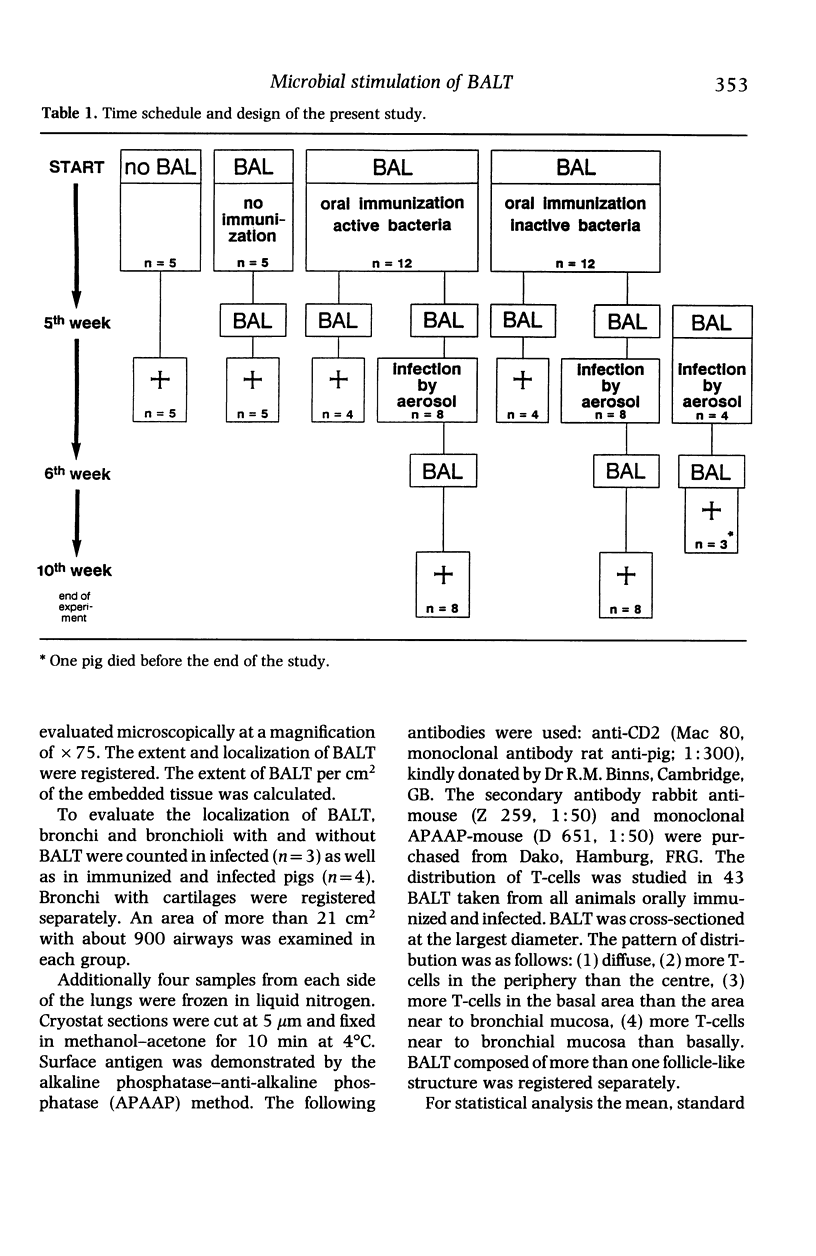
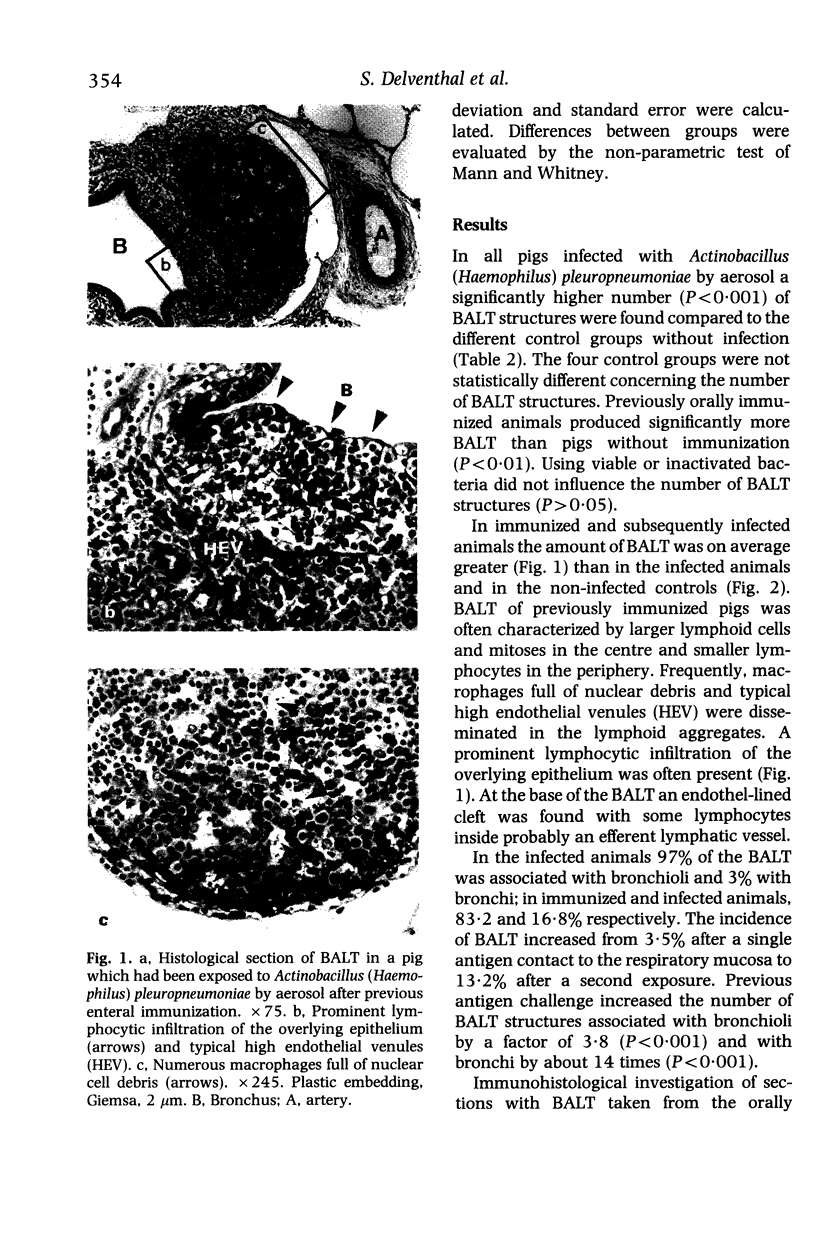
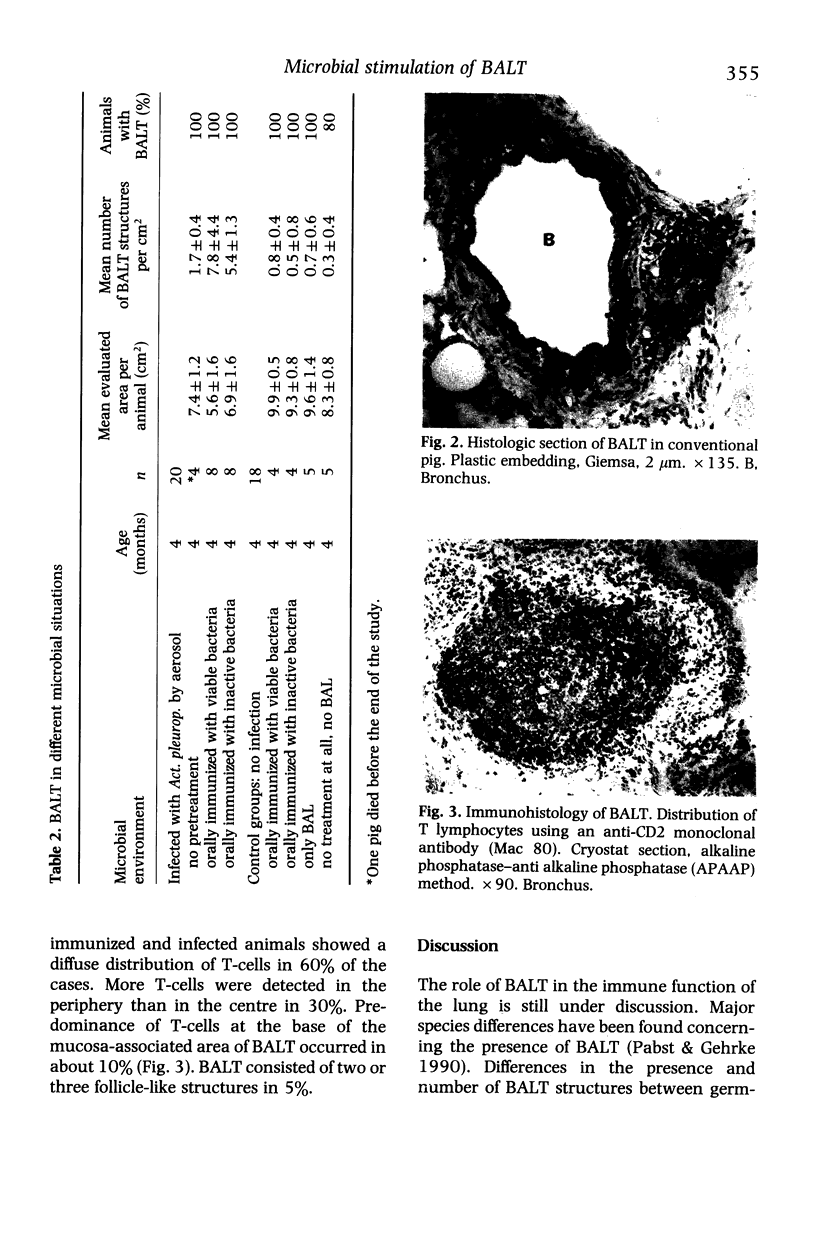
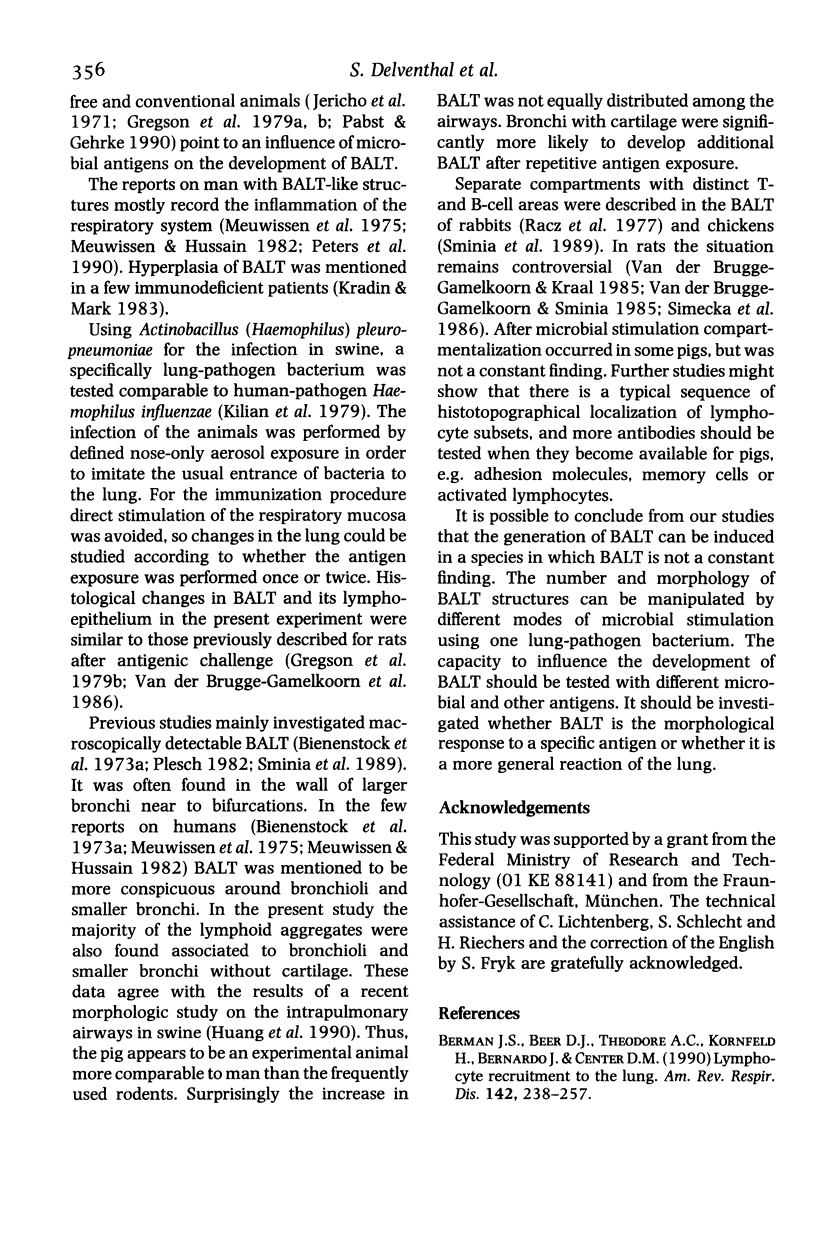
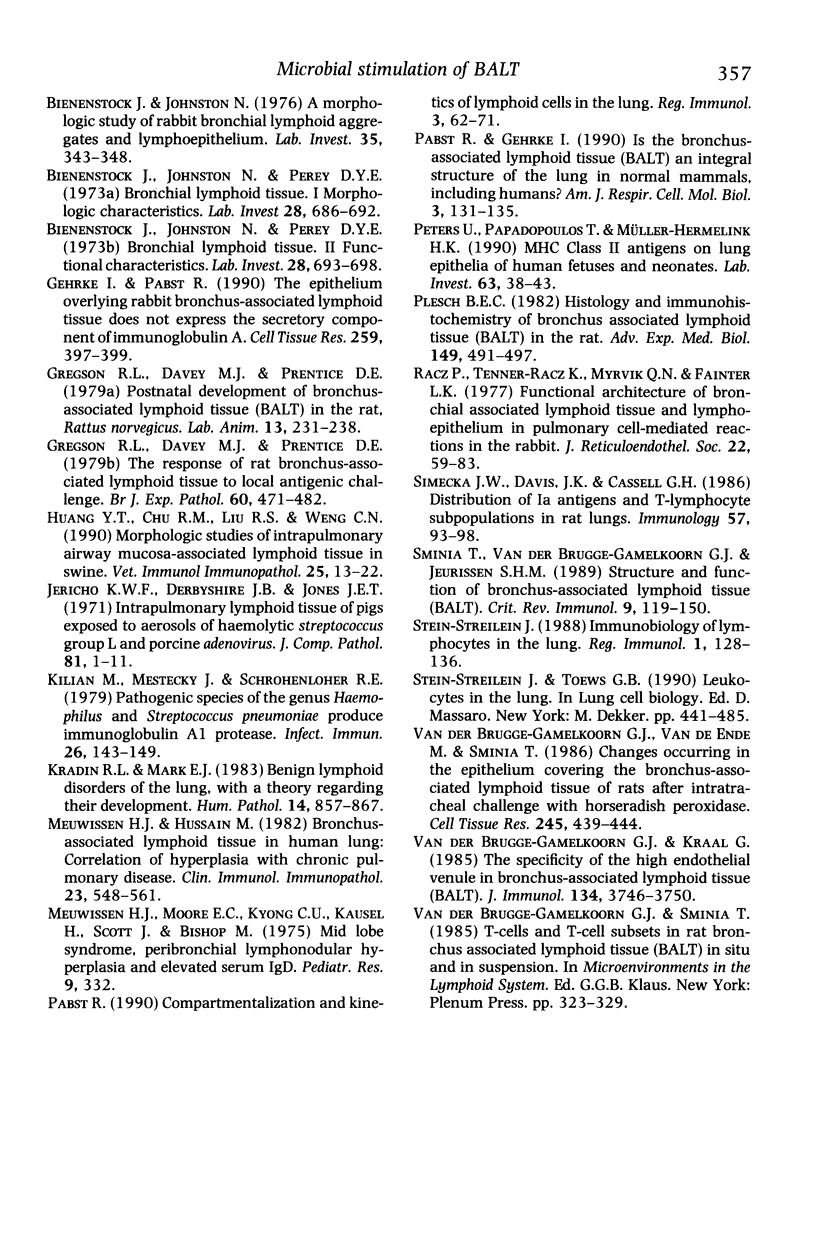
Images in this article
Selected References
These references are in PubMed. This may not be the complete list of references from this article.
- Bienenstock J., Johnston N., Perey D. Y. Bronchial lymphoid tissue. I. Morphologic characteristics. Lab Invest. 1973 Jun;28(6):686–692. [PubMed] [Google Scholar]
- Bienenstock J., Johnston N., Perey D. Y. Bronchial lymphoid tissue. II. Functional characterisitics. Lab Invest. 1973 Jun;28(6):693–698. [PubMed] [Google Scholar]
- Gehrke I., Pabst R. The epithelium overlying rabbit bronchus-associated lymphoid tissue does not express the secretory component of immunoglobulin A. Cell Tissue Res. 1990 Feb;259(2):397–399. doi: 10.1007/BF00318464. [DOI] [PubMed] [Google Scholar]
- Gregson R. L., Davey M. J., Prentice D. E. Postnatal development of bronchus-associated lymphoid tissue (BALT) in the rat, Rattus norvegicus. Lab Anim. 1979 Jul;13(3):231–238. doi: 10.1258/002367779780937870. [DOI] [PubMed] [Google Scholar]
- Gregson R. L., Davey M. J., Prentice D. E. The response of rat bronchus-associated lymphoid tissue to local antigenic challenge. Br J Exp Pathol. 1979 Oct;60(5):471–482. [PMC free article] [PubMed] [Google Scholar]
- Huang Y. T., Chu R. M., Liu R. S., Weng C. N. Morphologic studies of intrapulmonary airway mucosa-associated lymphoid tissues in swine. Vet Immunol Immunopathol. 1990 May;25(1):13–22. doi: 10.1016/0165-2427(90)90106-3. [DOI] [PubMed] [Google Scholar]
- Kilian M., Mestecky J., Schrohenloher R. E. Pathogenic species of the genus Haemophilus and Streptococcus pneumoniae produce immunoglobulin A1 protease. Infect Immun. 1979 Oct;26(1):143–149. doi: 10.1128/iai.26.1.143-149.1979. [DOI] [PMC free article] [PubMed] [Google Scholar]
- Meuwissen H. J., Hussain M. Bronchus-associated lymphoid tissue in human lung: correlation of hyperplasia with chronic pulmonary disease. Clin Immunol Immunopathol. 1982 May;23(2):548–561. doi: 10.1016/0090-1229(82)90139-8. [DOI] [PubMed] [Google Scholar]
- Pabst R. Compartmentalization and kinetics of lymphoid cells in the lung. Reg Immunol. 1990 Jan-Feb;3(1):62–71. [PubMed] [Google Scholar]
- Pabst R., Gehrke I. Is the bronchus-associated lymphoid tissue (BALT) an integral structure of the lung in normal mammals, including humans? Am J Respir Cell Mol Biol. 1990 Aug;3(2):131–135. doi: 10.1165/ajrcmb/3.2.131. [DOI] [PubMed] [Google Scholar]
- Peters U., Papadopoulos T., Müller-Hermelink H. K. MHC class II antigens on lung epithelial of human fetuses and neonates. Ontogeny and expression in lungs with histologic evidence of infection. Lab Invest. 1990 Jul;63(1):38–43. [PubMed] [Google Scholar]
- Plesch B. E. Histology and immunohistochemistry of bronchus associated lymphoid tissue (BALT) in the rat. Adv Exp Med Biol. 1982;149:491–497. doi: 10.1007/978-1-4684-9066-4_69. [DOI] [PubMed] [Google Scholar]
- Rácz P., Tenner-Rácz K., Myrvik Q. N., Fainter L. K. Functional architecture of bronchial associated lymphoid tissue and lymphoepithelium in pulmonary cell-mediated reactions in the rabbit. J Reticuloendothel Soc. 1977 Jul;22(1):59–83. [PubMed] [Google Scholar]
- Simecka J. W., Davis J. K., Cassell G. H. Distribution of Ia antigens and T lymphocyte subpopulations in rat lungs. Immunology. 1986 Jan;57(1):93–98. [PMC free article] [PubMed] [Google Scholar]
- Sminia T., van der Brugge-Gamelkoorn G. J., Jeurissen S. H. Structure and function of bronchus-associated lymphoid tissue (BALT). Crit Rev Immunol. 1989;9(2):119–150. [PubMed] [Google Scholar]
- Stein-Streilein J. Immunobiology of lymphocytes in the lung. Reg Immunol. 1988 Sep-Oct;1(2):128–136. [PubMed] [Google Scholar]
- van der Brugge-Gamelkoorn G. J., Kraal G. The specificity of the high endothelial venule in bronchus-associated lymphoid tissue (BALT). J Immunol. 1985 Jun;134(6):3746–3750. [PubMed] [Google Scholar]
- van der Brugge-Gamelkoorn G. J., Sminia T. T-cells and T-cells subsets in rat bronchus associated lymphoid tissue (BALT) in situ and in suspension. Adv Exp Med Biol. 1985;186:323–329. doi: 10.1007/978-1-4613-2463-8_39. [DOI] [PubMed] [Google Scholar]
- van der Brugge-Gamelkoorn G. J., van de Ende M., Sminia T. Changes occurring in the epithelium covering the bronchus-associated lymphoid tissue of rats after intratracheal challenge with horseradish peroxidase. Cell Tissue Res. 1986;245(2):439–444. doi: 10.1007/BF00213952. [DOI] [PubMed] [Google Scholar]



